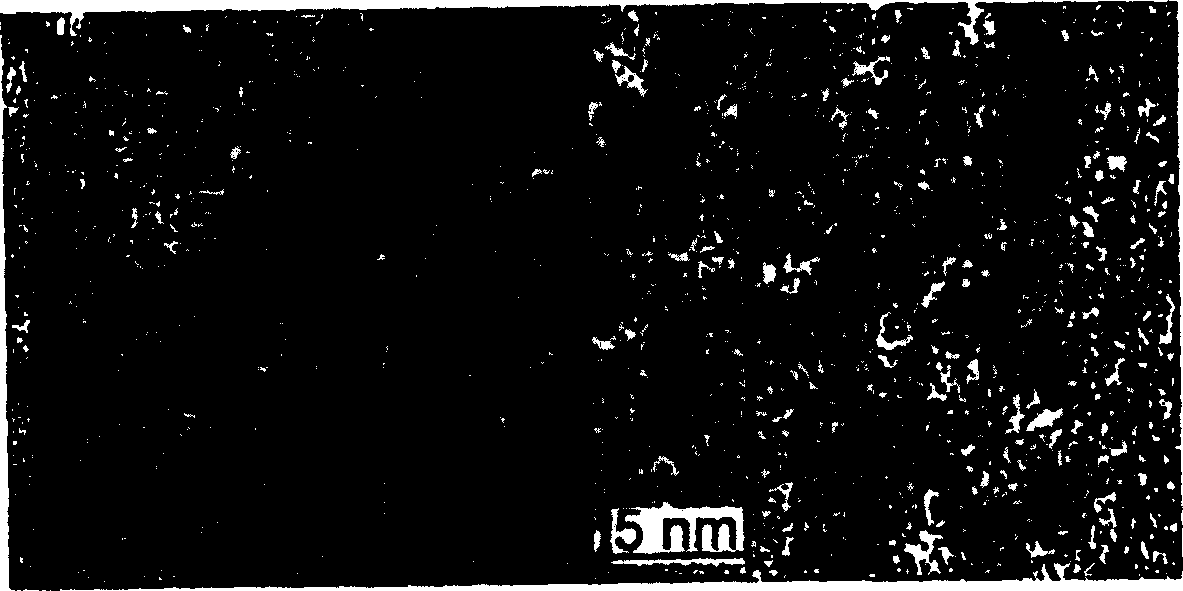Nanostructured and nanoporous film compositions, structures, and methods for making the same
A nanostructure and nanoporous technology, which is applied in the manufacturing of printed circuits, semiconductor/solid-state device manufacturing, and conductive pattern formation, etc., can solve the problems of no nanoporous membrane and no nanoporous
- Summary
- Abstract
- Description
- Claims
- Application Information
AI Technical Summary
Problems solved by technology
Method used
Image
Examples
example 1
[0037] In the example of the first embodiment, the barium-titanium bimetallic alkoxide (nominal composition is BaTi(OR)x) precursor formula is obtained by adding a suitable solution (preferably 5-50% (w / w), can be 1 -90% (w / w)) is prepared by dissolving the precursor. The recipe was applied as described above in "Initial Basic Method for Precursor Deposition". The resulting film is then converted in a separate photolysis step. The resulting metal oxide films are processed under hydrothermal conditions, such as digestion of a solution in an autoclave in the presence or absence of a suitable catalyst at a selected pressure and temperature. The hydrothermal treatment produces a film with nanocrystalline domains in the form of an amorphous metal oxide matrix.
[0038] A second embodiment of the present invention for producing nanostructured films is achieved by using two or more components selected based on different photochemical conversion rates, as described below. In this e...
example 2
[0040] In the example of the second embodiment, from Ta(OEt) in MIBK (methyl isobutyl ketone) 4 (acac) (acac=2,4-pentanedionate) (18% by weight), and zirconium (IV) 2-ethylhexanoate (29% by weight) was used to pass the conventional spin coating method to coat the substrate. This step is followed by photolysis using deep UV radiation (preferably 254 nm) for 30 minutes, as described in US Pat. No. 5,534,332. The light source in this example could be a Xe (xenon) lamp or a Hg (mercury) vapor lamp such as an Oriel TM 100W high pressure Hg vapor lamp in a housing equipped with a condenser lens and a 10 cm water filter with quartz optics. HeCd lasers emitting light at 325nm and / or 416nm have useful properties as light sources associated with many metal complexes. The UV irradiation step mainly causes the tantalum film to react. This was followed by development with hexane for 5 minutes, thereby forming a pattern. Photolysis was performed for an additional 2 hours, resulting in ...
example 3
[0042] In another example of the second embodiment, barium 2-ethylhexanoate and Ti(OiPr) in MIBK 2 (acac) 2 (21.5% w / w and 18.5 w / w respectively) mixtures were used to coat silicon substrates by spin coating method. The coated substrate was exposed to deep UV radiation for 30 minutes. The latent image was developed using a lithographic method (ie, patterned exposure of the substrate) with a mixture of hexane and isopropanol (10:90), resulting in a patterned film.
[0043] In order to confirm the composition of the film, the obtained barium titanium oxide film sample was placed in a water bath at 30° C. for 30 minutes. Membrane samples were removed from the water, and the water was analyzed by inductively coupled plasma mass spectrometry (ICP-MS). The water showed high levels of barium and no titanium. This result indicates that barium is selectively leached from the sample and also shows speciation (eg, the formation of discrete domains) of barium oxide and titanium oxide ...
PUM
 Login to View More
Login to View More Abstract
Description
Claims
Application Information
 Login to View More
Login to View More - R&D
- Intellectual Property
- Life Sciences
- Materials
- Tech Scout
- Unparalleled Data Quality
- Higher Quality Content
- 60% Fewer Hallucinations
Browse by: Latest US Patents, China's latest patents, Technical Efficacy Thesaurus, Application Domain, Technology Topic, Popular Technical Reports.
© 2025 PatSnap. All rights reserved.Legal|Privacy policy|Modern Slavery Act Transparency Statement|Sitemap|About US| Contact US: help@patsnap.com



